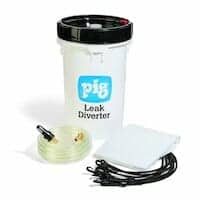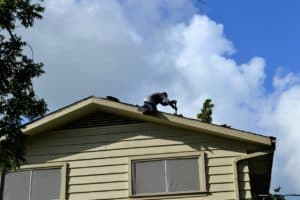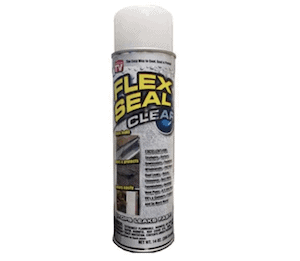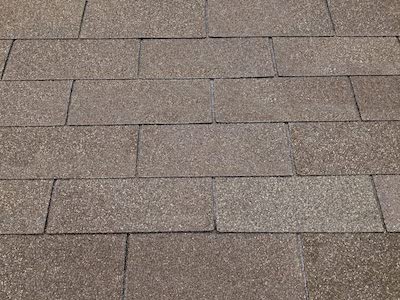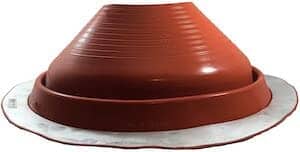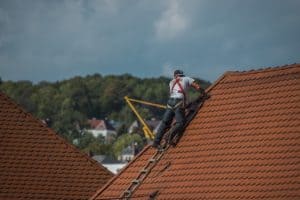Roof leaks are no joke; not only can the be annoying and frustrating to deal with, but they can also be detrimental to the structure of your house. If your roof is leaking continuously, mold can start to form in your house, causing potential health problems. If the weather is too bad to get a roofer out or if you don’t have the money to spend on a professional residential roofer right at that moment, then you need a quick and easy fix to stop the roof leak.
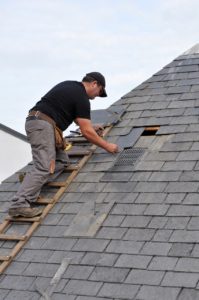
Emergency Roof Leak Repair
So how do you make an emergency roof leak repair? There are a 8 quick ways you can make an emergency roof repair:
- Use a tarp to stop the leak
- Use roofing cement to patch the roof or flashing
- Use silicone or caulk to stop the leak
- Utilize a Rubber Sealant Coating to Stop the Leak
- Use Roof Flashing to Temporarily Cover the Leaking Area of the Roof
- Replace shingles
- Make a replacement shingle
- Replace Roofing Pipe Flashing Boot
These methods are all ways to make an emergency roof repair; however, you should not rely on these methods to be permanent solutions. As soon as you can, contact a trusted roofing contractor to come and inspect your roof.
Before you get started, it’s important to recognize the signs of a roof leak, take measures to lessen the damage, and also find the leak itself. Here’s how we recommend how to do this:
How to Recognize that Your Roof is Leaking
Roof leaks can be both very evident and also more subtle. The only way you find some leaks is by going up in the attic to discover mold and mildew everywhere. Other leaks will be more prominent, creating water damage in your ceiling.
Before you jump to the conclusion that the roof is leaking, make sure you rule out all other sources that may cause leaks, specifically leaks related to plumbing. Sometimes plumbing issues can create leaks that can easily be mistaken for roofing leaks.
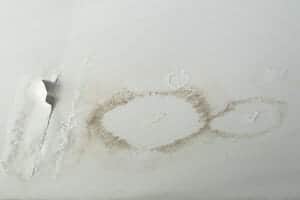
How to Minimize the Damage of a Roof Leak
Roof leaks not only make water drip from your ceiling, but they can also compromise the structural integrity of your house. It’s important to take actions to minimize damage as soon as you realize there’s a problem.
If the roof leak is causing the ceiling drywall to sag, the best thing to do is to take a pencil and poke a hole in the center of the affected area. But a bucket under the hole and watch the water pour through.
This will keep the water from spreading out over the ceiling and damaging the walls and decor, which can potentially cause the ceiling to collapse. As soon as you have this situated, then it’s time to go and find where the leak is coming from.
What to do if ceiling is leaking water?
Utilizing a Roof Leak Diverter Bucket can help mitigate the damage and save thousands of dollars of damage while you repair the roof leak. The roof leak diverter bucket kit can help protect your home and catch nuisance leaks and channel them.
For residential homes this can be used in the attic and attached to the attic trusses to divert the leak and save the ceiling and items below.
1. Use a Tarp to Cover the Leaking Area of the Roof
Using a tarp is a quick and easy temporary fix for an emergency roof leak repair. Once you’ve located the area in the roof where the water is entering, you can now go on the roof and cover the area with a tarp.
What is a tarp? A tarp or tarpaulin is a large, strong and flexible waterproof material. It is often a cloth polyester that is coated in polyurethane. Most tarps have grommets that make it easy to tie down or secure it.
A tarp will protect the affected area by keeping moisture out. In order to effectively do this, you’ll want to make sure that you drape the top part of the tarp over the point of your roof. This way, no water will be able to run under the tarp.
Once you’ve fitted the tarp over the area, nail the edges of the tarp down. This will keep the tarp from blowing away in the wind. This is an emergency repair that can be completed in minutes, so always make sure you have a tarp handy that you could use in a situation like this.
How to Attach a Roof Tarp to Make an Emergency Roof Repair
1. Spread the tarp over the leaking area.
2. Make sure the tarp is flat with out big creases. Use small bricks, 2x4s or weights to help hold the tarp down until you can fully secure it.
3. Start at the highest location on the roof and begin to secure the tarp to the roof using roofing nails or screws. Utilize the grommets to avoid ripping or tearing the tarp.
4. Work your way down to the area of the tarp that is closest to the ground.
2. Use Roofing Cement to Patch the Roof Leak
Roofing cement can be used to fix cracks, patch holes in your roof or make other emergency roof repairs. You can purchase roofing cement from any hardware store or Amazon. This technique is most effective when applying the roof cement to a dry roof.
The process of applying roofing cement is a straightforward one. All you do is brush away debris from the hole or the crack, then fill it in with roofing cement. Most roofers will recommend putting a roofing mesh over the cement in order to make it more secure.
Here is our full article on Roofing Cement.
Roofing Cement
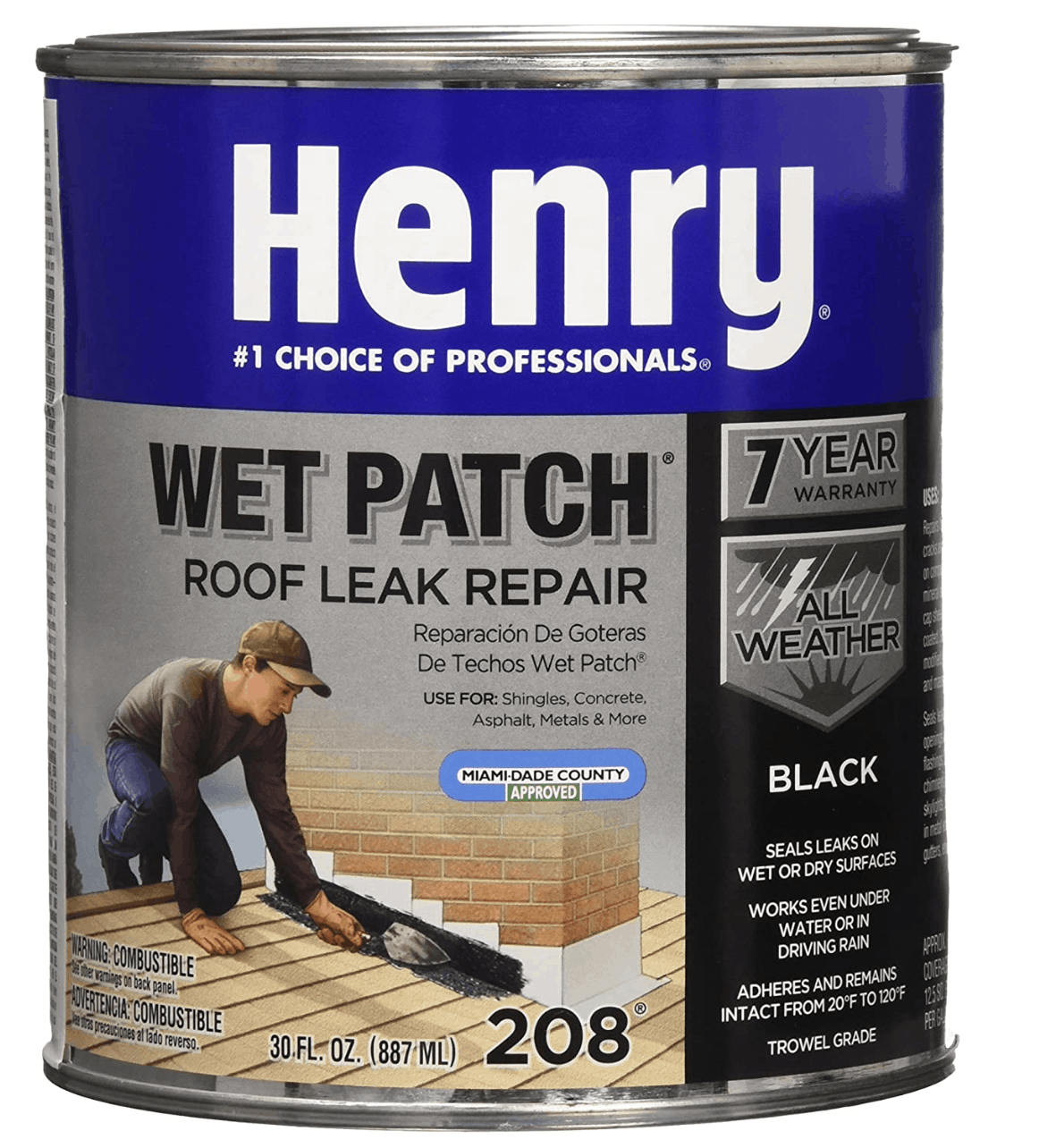
3. Use Caulk or Silicone to Stop the Leak
While this isn’t a long term fix it can be a great stop gap. This is especially good for fixing a small hole in a shingle, flashing or soffit. Some roofers use silicone around chimneys and this can become old and cracked. A fresh application can help stop a leak in these trouble areas.
4. Utilize a Rubber Sealant Coating to Stop the Leak
While there are several roof leak repair products out on the market finding one that can repair the roof leak can be difficult. A product that we’ve had success with is Flex Seal. Similar to silicone this isn’t a long term fix but can help in an emergency situation. You can apply it in wet or dry conditions. For smaller holes we suggest applying it to the area where the leak is coming from. For larger areas you may need a combination of techniques to stop the leak. You can utilize a tarp and then rubber sealant on the edges to make it air tight. Where ever you spray this it will change the color of the material that it’s sprayed on. Don’t over spray or use it in areas you don’t plan on replacing. I could leave large colored spots on your roof. We’ve also had good success using it to patch holes in leaky guttering.
5. Use Roof Flashing to Temporarily Cover the Leaking Area of the Roof
Roof flashing is a flimsy metal material that can be caulked under shingles over leaking areas. The flashing allows water to run over the area without being able to get into the house.
All you have to do is apply caulk around the location of the leak, tuck the flashing under the row of shingles, and press it against the caulk, which will seal it from leaking.
Flashing can be very effective at stopping leaks around the base of the chimney or in parts of the roof where the most water will drain to. Professional contractors will usually install flashing when the roof is originally built in order to ensure the longevity of the roof.
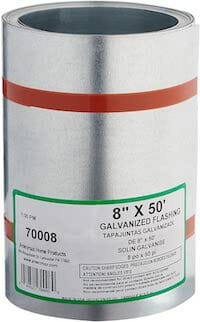
![]()
6. Use Replacement Shingles to Patch the Roof Leak
Loose, curling, or broken shingles can be a catalyst to a roof leak. If you feel like you’re a more skilled handyman, then you may be up for the challenge of replacing the shingles yourself.
The first thing you’ll have to do is to remove the damaged shingle. You can do this by sliding a flat pry bar under the shingles in order to pop out the nails holding it in place. Once you do this, you can slide in a new shingle and nail it down.
On the underside of the shingle, you can apply roofing cement in order to hold the shingle down. Even if your emergency roof repair seems to be successful, you should still contact a professional roofing contractor as soon as possible to make sure that the roof leak was repaired correctly.
7. Create a Temporary Shingle from Sheet Metal or Plastic
If you need to replace shingles on your roof but don’t have extra roof supplies laying around, you can fashion a temporary shingle from sheet metal.
Cut the sheet metal to match the size and shape of a shingle, then follow the steps as if you were replacing an ordinary shingle. Once you have the sheet metal shingle in place, you can nail it in, being sure to cover the nails with roofing cement so the holes don’t start leaking.
8. Replace Roofing Pipe Flashing Boot
If your leak is coming from around the pipes there is good chance that your pipe flashing boot has been cracked or busted. This can happen to old pipe flashings. This can be purchased and replaced at minimal cost and could be just what you need to stop the roof leak. Make sure to measure and choose the correct size for your pipe. There are a variety of sizes and colors.
Pipe Flashing Boot
Related Questions
How do I find Where the Leak is Coming From?
There are two places to check when trying to track down a roof leak. Start on the roof and see if the is anything penetrating the serface of the roof. Here are some roof safety tips to practice when on a roof: Roof Safety Tips. Next you can go into the attic and track down the leak in the attic and see if there is any wood rot or damage to the attic. Finding the specific point where the roof is leaking can be frustrating. Water can tend to run and drip down and away from the leak, making it hard to find that actual source.
If it’s not raining outside you can utilize a water hose to find the roof leak. Begin spraying the roof above the leak. Observe from the attic to find the exact area the leak is coming from.
The easiest way to find the leak is to go into the attic while it’s raining and find the entry point of the water. Once you find the area of the leak, mark the spot and begin your emergency roof repair.
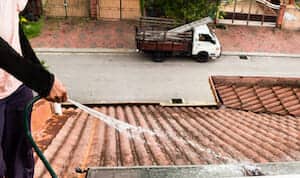
Can a Roof Leak be Fixed From the Inside?
You can temporarily fix a roof leak from inside your attic, but sooner rather than later, you will need to fix the leak from the outside.
An easy way to fix the leak from inside the house is to go in the attic and cover the leak with tar. Be sure to stick the tar up into the leak for ultimate coverage. Next, you can place a patch of sheet metal over the tar. Be sure to cover the edges of the sheet metal with tar as well
What Causes an Emergency Roof Leak?
If your roof is only a few years old and it’s started to leak, it most likely means that the roof wasn’t installed correctly to begin with. If you used a professional roofing contractor to replace your roof the first time, call them to see if they offer a warranty on the roof installation.
If your area experiences particularly rough weather, a new roof could be worn in no time. In this instance, providing before and after pictures of your roof affected by the storm to your insurance company will help you to get the insurance money you need to pay for a new roof.
Is a leaky roof an emergency?
If you spot any leaks, don’t wait to get them fixed! A small leak can quickly turn into a big problem. Sometimes all it takes is some preventative maintenance and other repairs to stop the problem from getting worse in future – before your home suffers water damage.
Here are a three types of roofing problems that might indicate early signs of leakage:
-Rusting joints or nails along seams between shingles
-Cracks in asphalt shingle roofs after they have been exposed for long periods as well as discoloration around these cracks indicating moisture underneath surfaces
-Fungus growing on siding beneath eaves if this area was once an attic (you may be able to identify mold)
If you see any of these issues you can begin preventing further damage by patching the leak. They you can contact your local roof contractor or insurance company to see if you’ll need a new roof. Here is an article to find out how to get the insurance company to buy you a new roof.

